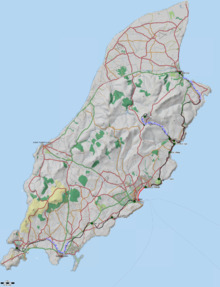| Railways and tramways of the Isle of Man | ||||||||||||||||||||||||||||||||||||||||||||||||||||||||||||||||||||||||||||||||||||||||||||||||||||||||||||||||||||||||||||||||||||||||||||||||||||||||||||||||||||||||||||||||||||||||||||||||||
|---|---|---|---|---|---|---|---|---|---|---|---|---|---|---|---|---|---|---|---|---|---|---|---|---|---|---|---|---|---|---|---|---|---|---|---|---|---|---|---|---|---|---|---|---|---|---|---|---|---|---|---|---|---|---|---|---|---|---|---|---|---|---|---|---|---|---|---|---|---|---|---|---|---|---|---|---|---|---|---|---|---|---|---|---|---|---|---|---|---|---|---|---|---|---|---|---|---|---|---|---|---|---|---|---|---|---|---|---|---|---|---|---|---|---|---|---|---|---|---|---|---|---|---|---|---|---|---|---|---|---|---|---|---|---|---|---|---|---|---|---|---|---|---|---|---|---|---|---|---|---|---|---|---|---|---|---|---|---|---|---|---|---|---|---|---|---|---|---|---|---|---|---|---|---|---|---|---|---|---|---|---|---|---|---|---|---|---|---|---|---|---|---|---|---|
| ||||||||||||||||||||||||||||||||||||||||||||||||||||||||||||||||||||||||||||||||||||||||||||||||||||||||||||||||||||||||||||||||||||||||||||||||||||||||||||||||||||||||||||||||||||||||||||||||||
See also Transport in the Isle of Man.
The Isle of Man has a rich transport heritage and boasts the largest narrow-gauge railway network in the British Isles[1] with several historic railways and tramways still in operation. These operate largely to what is known as "Manx Standard Gauge" (3 ft (914 mm) narrow gauge)[2] and together they comprise about 65 miles (105 km) of Victorian railways and tramways. The Isle of Man Railway Museum in Port Erin allows people to find out more about the history of the Manx railways, and was until 1998 accompanied by a similar museum in Ramsey, which was dedicated to the history of the electric line, but this was closed and converted into a youth club. The steam railway to the south of the island, electric to the north and mountain line to the summit of Snaefell, the island's only mountain, are all government-owned, and operated under the title Isle of Man Railways, as a division of the island's Department of Infrastructure. The lines at Groudle Glen and Curraghs Wildlife Park are both privately owned but open to the public.[3]
Lines
The lines listed in the table are or have been open to the general public. Most lines have "Manx Standard Gauge" of 3 ft (914 mm).
| Name | Start | End | Gauge | Notes |
|---|---|---|---|---|
| Isle of Man Railway | 1873 | — | 3 ft (914 mm) | Peel line closed 1969 |
| Manx Northern Railway | 1879 | 1905 | 3 ft (914 mm) | Taken over by the Isle of Man Railway in 1905. Last tracks used 1969. |
| Foxdale Railway | 1886 | 1905 | 3 ft (914 mm) | Taken over by the Isle of Man Railway in 1905. |
| Snaefell Mountain Railway | 1895 | — | 3 ft 6 in (1,067 mm) | |
| Groudle Glen Railway | 1896 | — | 2 ft (610 mm) | No service 1962 to 1983 |
| Manx Electric Railway | 1893 | — | 3 ft (914 mm) | |
| Douglas Bay Horse Tramway | 1876 | — | 3 ft (914 mm) | |
| Great Laxey Mine Railway | 1877 2004 | 1929 — | 19 in (483 mm) | Former mine railway, reopened in 2004 as a tourist heritage railway |
| Upper Douglas Cable Tramway | 1896 | 1929 | 3 ft (914 mm) | |
| Douglas Southern Electric Tramway or Marine Drive railway | 1896 | 1939 | 4 ft 8 in (1,422 mm) | |
| Douglas Head Funicular Railway or Douglas Head Inclined Railway[4][5][6] | 1900 | 1954 | 4 ft (1,219 mm) | Passenger incline railway |
| Port Soderick Cliff Lift [5][7][6] | 1896 | 1939 | 4 ft (1,219 mm) | First Falcon Cliff Lift sold to Port Soderick and re-erected there in 1896 |
| Laxey Browside Tramway[6] | 1890 | 1906 | 5 ft (1,524 mm) | |
| Queen's Pier Tramway, Ramsey | 1882 | 1971 | 3 ft (914 mm) | Restoration works under way |
| The Orchid Line, Wildlife Park, Ballaugh | 1992 | — | Various | Miniature railway |
There have been various other railways on the Isle of Man that have never been open for public transport, such as in the various mines around the island. Among these are/were:
- Knockaloe branch line, owned by the IMR, for Knockaloe internees and supplies
- Peel Harbour Tramway, construction railway, 3 ft (914 mm),steam locomotives, built 1864 or 1865 and dismantled 1873.[7]
- Glenfaba Brickworks Tramway [8]
- Falcon Cliff Lift incline railways:
- Douglas Breakwater Crane Railway
- Port Erin Breakwater Railway, a construction line for the Port Erin Breakwater. 7 ft (2,134 mm), steam traction, built 1864.
- Crogga Valley Railway, a private garden railway
- St. John's Gravel Line
- Douglas Holiday Camp[7]
- A second Laxey Mine tramway, 3 ft (914 mm), horsedrawn, on the lower washing floor, constructed around 1865 and lasted until at least 1918[7]
- A construction railway to the Injebreck Reservoir, 3 ft (914 mm), built 1899, length 4½ miles from Hillberry to the Reservoir, worked with steam locomotives.[7]
About fifty other minor tramways, in the various mines, quarries and sand pits, or on RAF gunnery lines, existed on the island.[7]
See also
- Isle of Man
- List of heritage railways
- Mountain railway
- Transport in the Isle of Man
- Sodor
References
- ^ Herring, Peter (2004). Yesterday's Railways. David & Charles. pp. 270–272. ISBN 978-0-7153-1733-4.
- ^ Railways in the United Kingdom
- ^ The Manx Steam & Model Engineering Club Archived 16 March 2011 at Archive.today
- ^ The Isle of Man Railways: The Douglas Head Railway
- ^ a b c Marine Drive
- ^ a b c d Isle of Man Cliff Railways
- ^ a b c d e f g h The Industrial Archaeology of the Isle of Man Archived 21 November 2008 at the Wayback Machine
- ^ The Isle of Man Railways: The Glenfaba Brickworks Tramway
- ^ Falcon Cliff
